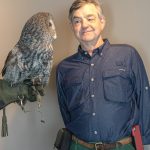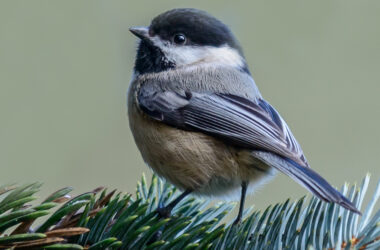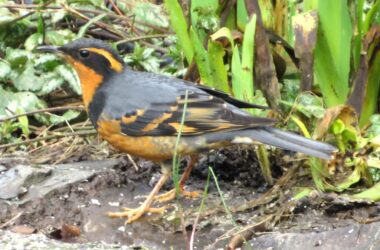Editor’s note: Salem bird expert Harry Fuller has been writing about Salem’s current owl inhabitants following several reports of new owl attacks near Bush’s Pasture Park in December. Read his previous columns on the topic here and here.
There have been no new reports of owl attacks in the area just north of Bush’s Pasture Park. I have enlisted the assistanc – eyes and ears – of two friends who live in the vicinity. One is a predawn jogger who was attacked one morning back in 2015 in the park. That series of attacks was done by one or two nesting barred owls.
My second unpaid assistant is Dr. David Craig, biology professor at Willamette University. He is an expert on local birds and does field research with his students. Craig has shared with us his recent owl encounters in that area.
Last winter he twice heard great horned owls calling along Leslie Street. That is the time of year a pair would be nesting and vocalizing, sometimes male and female dueting.
Craig has even more barred owl encounters as he walks to work at the Olin Science Center on campus. In addition, he and his students repeatedly observe barred owls near the Kaneko dorms on campus. The roosting owls have been found there in three of the past seven years.
Also, Craig has four sightings/hearings of barred owls near the Leslie Street area this past fall. The most recent was Dec. 7. A scrub-jay found the owl and made a loud announcement.
If seen, the two species should be possible to differentiate. Most crucially, the barred has a rounded head. Great horned will often have their “ear” tufts up, especially if they are excited or aggressive. The listening ears are in the front of the owl’s face, behind feathers. The tufts are simply grouped feathers used to communicate intentions and reactions of the bird.
The barred is under 18 inches tall; an adult great horned will be about 22 inches tall. They each have wingspans between 40 and 45 inches. Great horned have longer talons and eat heavier prey, while barred stick to small rodents and birds. The great horned can weigh three pounds, the lighter barred only about half that. Chest markings on the great horned are dark lines that are horizontal. On a barred the lines are vertical with significant white between those lines.
The hoots of a great horned are low-pitched, usually one or two notes, then a rest before the next hoot. The barred has a higher pitched sound, and often has a rhythm of rapid notes, sometimes verbalized by people as “who? who? who-cooks-for you?” Below are links to Cornell website where you can listen to each owl’s sound and compare.
It isn’t just in Salem. Last October a barred owl in Newberg was caught stealing hikers’ hats.
For information about upcoming Salem Audubon programs and activities, see www.salemaudubon.org, or Salem Audubon’s Facebook page.
Harry Fuller is an Oregon birder and natural history author of “Freeway Birding” and the newly-published “Birding Harney County.” He is a member of the Salem Audubon Society. Contact him at [email protected] or atowhee.blog. His “Some Fascinating Things About Birds” column appears regularly in Salem Reporter.
STORY TIP OR IDEA? Send an email to Salem Reporter’s news team: [email protected].
SUPPORT OUR WORK – We depend on subscribers for resources to report on Salem with care and depth, fairness and accuracy. Subscribe today to get our daily newsletters and more. Click I want to subscribe!

Harry Fuller is an Oregon birder and natural history author of three books: “Freeway Birding,” "Great Gray Owls of California, Oregon and Washington," and "San Francisco's Natural History--Sand Dunes to Streetcars." He leads birding trips for the Malheur Field Station. He is a member of the Salem Audubon Society, and leads bird trips locally. Harry has just published a new book, BIrding Harney County.









